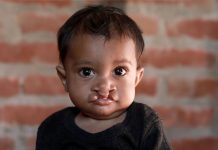Most of us had this preconceived notion about a new normal being something tech-savvy with flying cars, fully automated industries, and affordable robots for domestic purposes. A few of us even stressed about losing our jobs to robots down the years.
Not even in our wildest dreams did we dream about a new normal on the lines of sanitization, vaccination, masks, mass deaths, and more. So what has changed and what hasn’t in the said “New Normal After COVID-19”?
Two Years of COVID
The first-ever coronavirus was identified in Wuhan, China in December 2019. The virus made its US debut in December. January 15 became the recorded date after an infected 35-year-old US traveler from Wuhan returned home.
China put three Wuhan cities on lockdown but Hong Kong became the first country to impose a nationwide lockdown. More than 5.5 million people died and around 334.1 million were infected with the virus.
California became the first state to impose a lockdown. Infection and death tolls were on the rise. Trump introduced stimulus checks, around 40 million people lost their jobs, and protests were organized against the lockdown. The hospitals went short on testing kits, COVID-19 protection gears, there was the unavailability of medicines, masks, toilet paper, and other essentials across the country.
The first vaccine was administered on December 14, 2020, in the US. New variants were emerging alongside Over 69 million Americans were infected and over 8.6 million died. Lockdown restrictions were eased, business outlets refused entry and sale for individuals without a face mask.
New Normal With COVID-19
The COVID-19 pandemic disrupted daily life. Researchers and frontline workers faced burn outs. Stress, depression, and mental health became popular topics. Here is a glimpse of the new normal of life after COVID-19:
- Gloves, masks, and sanitizers became as essential as toilet paper. Panic buying and burned-out savings dented mental health beyond repair. Many households lost their loved ones and went below the poverty line. Suicide, homicide, theft, and robbery were on the rise. Hand washing, health consciousness, and other precautionary measures were inculcated with the routine.
- Work from home and online classes became the norm. There were no more sick leaves, left the homework at home, and snow day holidays. “Am I visible?” and “ Am I audible?” became the most popular phrases. Network error and slow wifi became common excuses.
- While a few families bonded with each other, others broke. People experience stress, anxiety, and depression. Group calls on zoom became stress busters. Participating in online challenges was the only way to socialize.
- Healthy people were not allowed to accompany infected family and friends at hospitals. Not having a formal funeral nor being able to meet to bid goodbye to loved ones was normalized.
- OTT platforms, video calls, cashless economy, and online shopping were also normalized. The show business discovered ways to film with the bare minimum. Screen time and its disadvantages became a huge concern.
- Lockdowns and jobs that cannot be done from home pushed many families off the cliff. Anti-vaxxers were obstacles to achieving herd immunity. While many gained trust in humanity and relationships there were people with broken hearts and broken dreams.
New Normal After COVID 19: What Didn’t Change
Do you know what didn’t change during the pandemic? Here are the top five things that escaped the clutches of coronavirus:
- Online tutorials and DIY videos lost popularity soon after the ease in lockdowns.
- Politics and society were unfaced. The pandemic made no difference, people were still frustrated and ill-treated.
- The stress on mental health was again pushed to the back seat.
- Several people stopped engaging in newfound hobbies after the unlock.
- Work and personal life balance had no impact as well.
The world is still digesting the turnout of events. WHO and other health organizations are coming up with newer strategies to tackle the post-COVID-19 reality.

















